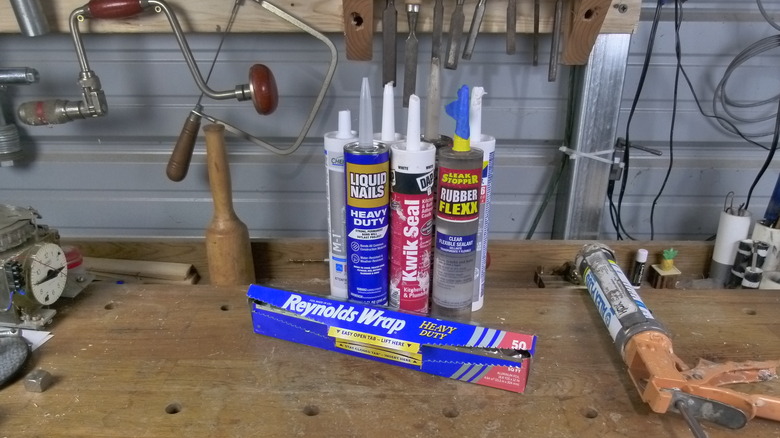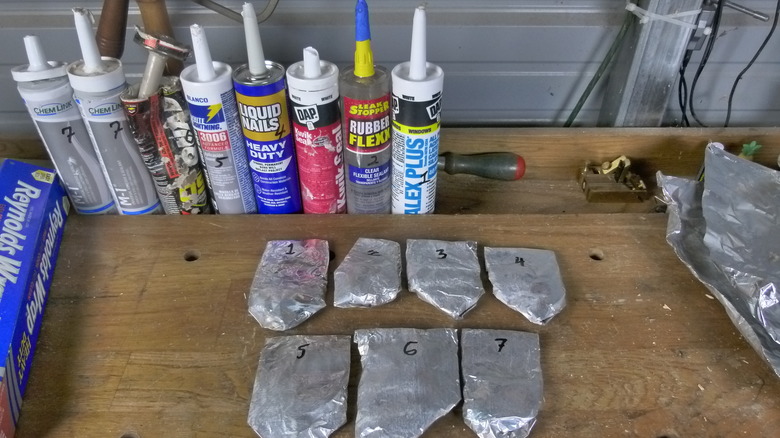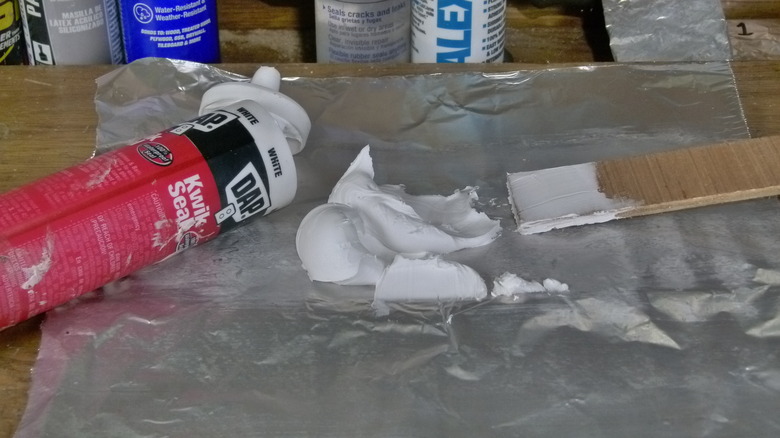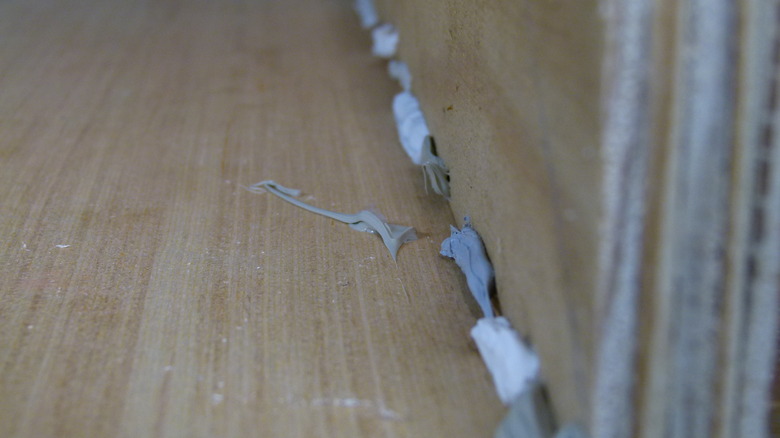We Used Aluminum Foil As A Caulking Gun Replacement And The Results Stuck With Us
We may receive a commission on purchases made from links.
Tools break. I have a bin of broken (or extremely dysfunctional) power tools that I tell myself I will fix someday. Sometimes user error cause them to break, and tools do break on their own. But the worst is when tools break and take other things with them, and I can't count the times I've had a tube of adhesive, caulk, or sealant — there is a difference — explode all over my caulking gun. You can blame the tube (fair), blame the gun (fair), or blame the user (utter nonsense), but either way you're left with a gun with its parts all glued together while you have something to caulk. There are several ways to caulk without a caulking gun, however, could you do this with the most versatile of all materials — aluminum foil?
Of course, you probably have a spare caulking gun. Or 12. But there are other reasons for a replacement: It's pretty common to find yourself working in a space too tight for a caulking gun, as an example. It seems obvious that a reasonably strong plastic bag should be your go-to piping bag — a resealable zipper bag or even an actual pastry bag. But you might have neither and resort to the foil trick to avoid driving to Home Depot when you'd planned to be caulking the bathtub.
Testing with these caulks, sealants, and adhesives
In addition to a partial case of generic Alex Plus trim caulk, I always have half-filled cartridges of adhesives, sealants, and caulk in a workshop bin. Some are a few weeks old and some are well over a year old. Based on poking at the tubes to see which felt viable, these are the seven products I tested the foil caulking "gun" idea with: Dap Alex Plus Acrylic Latex Caulk, Leak Stopper Rubber Flexx Clear Flexible Sealant, Dap Kwik Seal, Liquid Nails Heavy Duty Multi-Use Construction Adhesive, White Lightning 3006 All-Purpose Adhesive Caulk, OSI Quad Window, Door and Siding Sealant, and Chem Link M-1 Structural Adhesive Sealant. Each of these has a slightly different viscosity, ranging in consistency from fluffy icing to something just short of gummy bear.
Around each product I folded (five times) a 12 by 12-inch square of Reynolds Wrap Heavy Duty Aluminum Foil ($4.48 at Walmart). Note that, if my experiment worked, one would hypothetically be able to make 50 improvised caulking gun replacements with this box of foil — a remarkable value for an emergency measure. Other gear included a razor knife for getting into caulk tubes too dried to expel from the nozzle; a felt-tip marker for numbering the tubes and their corresponding foil packets; and a couple of scrap boards screwed together to give me a corner to squeeze a little of each product into.
Bringing back caulk from beyond the grave
There was one shortcoming I knew this approach would have even if it worked: Many people dispensing caulk use the nozzle to shape their bead of caulk, and since the aluminum foil has no hard nozzle, that clearly wasn't going to be an option. Reasoning that anyone who ever used this emergency measure would be forced to use a caulking tool or some other means of shaping their beads, I didn't worry much about the shape of the bead. I simply folded the foil so that the caulk was near a pointed corner, cut the corner, and tried to squeeze it out. I also didn't lay down any exceptionally long beads, except for the Alex Plus I experimented with when designing my foil packet. The idea was simply to see if a foil piping bag-like construction might be used to dispense caulk in a controlled manner.
I was unable to dispense three of the products with a caulking gun: Dap Kwik Seal, OSI Quad, and ChemLink M-1. I cut the top off of each of these tubes and scooped the product onto the aluminum foil with a scrap of wood. The first tube of ChemLink M-1 had to be discarded as it was completely solidified, but I found enough in a second tube to carry on. During the test, my plan was to re-wrap any packet that broke in a double-layer of foil and try again. Easy peasy caulky squeezy, right?
The aluminum foil caulking miracle
It turned out to be pretty easy. Only the Kwik Seal and Quad packets broke, and both worked perfectly fine with the doubled layer of foil. (If you were going to try this in a real-life situation, it would be a good idea to just use a double-layer from the beginning.) Now, here's the thing: I bought the ChemLink M-1 from a Habitat ReStore four years ago, and it was difficult to use with a caulking gun. But I was able to dispense it from my foil packet, moving very slowly. And therein lies one of my few caveats about this hack.
If you use this trick, resign yourself to some realities: you must caulk very slowly, for example, and you'll have to get the caulk from its tube to the foil packet (my process worked, but it would not be a fun way to handle a case of caulk during, say, a bathroom remodel). With all that in mind, I have to say that this experiment surprised me. I didn't expect it to work at all, much less be a viable way of putting down a few beads in an emergency. Okay, sure, you'd be well-advised to first try the clever knife-slit trick if caulk is leaking from your tube. But I left the roll of foil in my workshop, and I'll buy another for the kitchen. Because, wow, if foil can do this, I can probably find other uses for it too.



